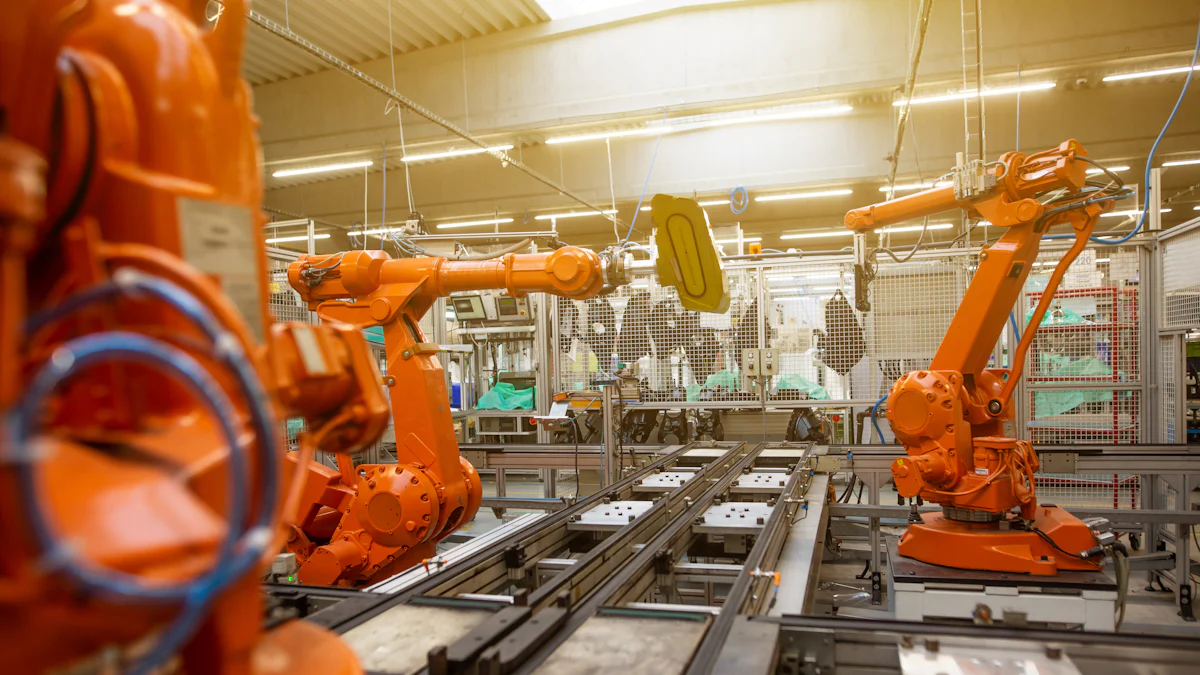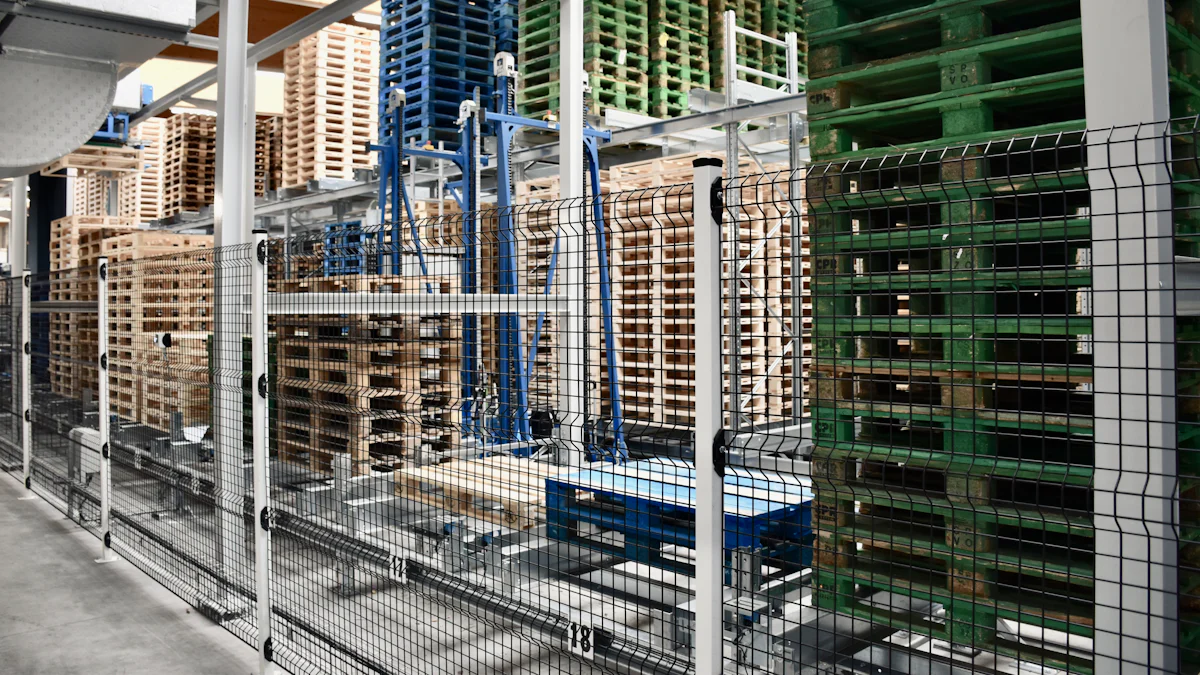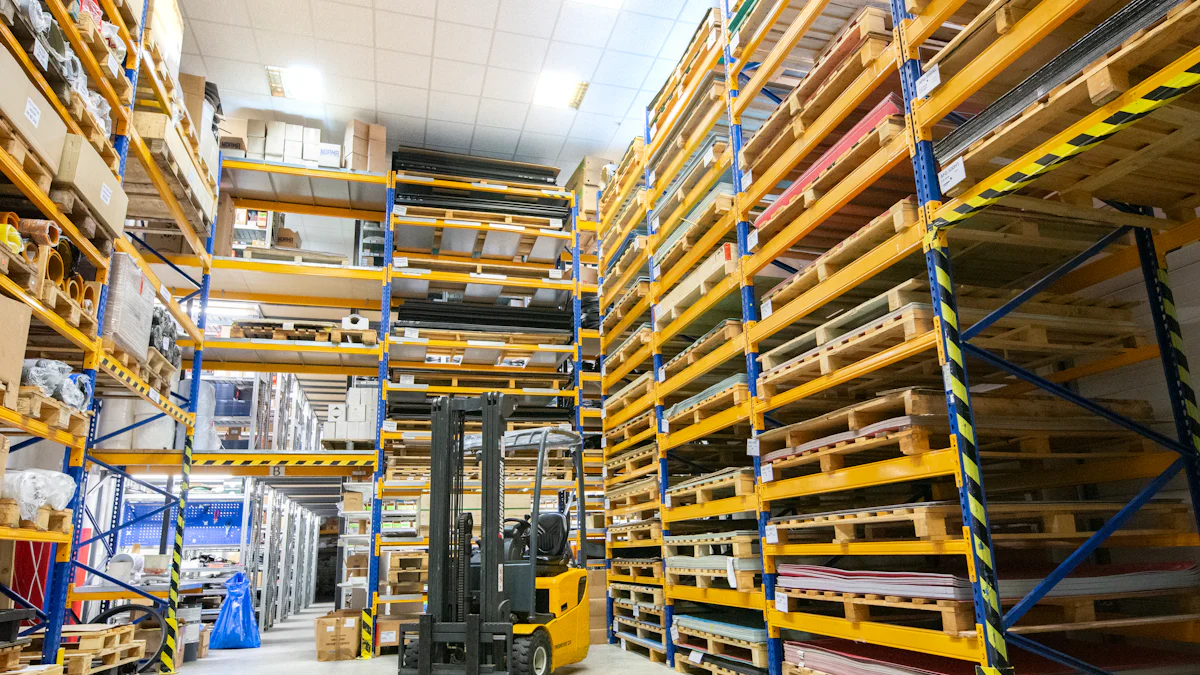Why Automated Warehousing is Crucial for High-Tech Manufacturing

In the realm of high-tech manufacturing, precision and efficiency are paramount. The integration of automated warehousing has revolutionized the industry, streamlining processes and enhancing productivity to unprecedented levels. Automation is not merely a trend but a necessity in modern manufacturing landscapes. The utilization of cutting-edge technologies like robotics and AI has reshaped traditional warehouse operations, paving the way for a new era of innovation and optimization.
Benefits of Automated Warehousing

In the realm of high-tech manufacturing, the implementation of automated warehousing brings forth a myriad of advantages that significantly impact operational efficiency and productivity. Let's delve into the key benefits that automated warehousing offers to modern manufacturing facilities.
Enhanced Efficiency
Reducing Human Errors
By integrating automated warehousing systems, high-tech manufacturing companies can effectively minimize the occurrence of errors caused by human factors. The utilization of advanced robotics and AI technologies ensures precise handling and storage of goods, reducing inaccuracies in inventory management and order processing.
Lowering Operation Costs
Automated warehousing plays a pivotal role in optimizing operational costs for high-tech manufacturing entities. Through streamlined processes and reduced reliance on manual labor, companies can achieve cost savings in various aspects of warehouse operations, including labor expenses and inventory maintenance.
Improved Productivity
Faster Processing Time
One of the primary advantages of automated warehousing is its ability to expedite processing times within manufacturing facilities. With automated systems handling tasks such as picking, packing, and sorting, companies can fulfill orders at a much faster pace, enhancing overall operational efficiency.
Space Utilization
Automated warehousing solutions are designed to maximize space utilization within warehouses, making efficient use of available storage areas. By implementing automated storage and retrieval systems (AS/RS), high-tech manufacturers can store a larger volume of inventory in a compact footprint, optimizing warehouse space for increased productivity.
Safety and Accuracy
Eliminating Safety Risks
Safety is paramount in high-tech manufacturing environments, and automated warehousing contributes significantly to creating a safer workplace for employees. By automating tasks that involve heavy lifting or repetitive motions, companies can reduce the risk of workplace injuries and ensure a secure working environment.
Accurate Order Fulfillment
Automated warehousing enhances order accuracy by minimizing errors in the picking and packing processes. With advanced technologies such as barcode scanning and RFID tracking systems, manufacturers can ensure precise order fulfillment, leading to higher customer satisfaction rates and improved supply chain performance.
As evidenced by Exotec Warehouse Automation Case Studies and Primerobotics Warehouse Automation Benefits, the adoption of automated warehousing has proven instrumental in driving efficiency gains, cost reductions, enhanced safety measures, and overall productivity improvements for high-tech manufacturing enterprises.
Implementation Strategies
When it comes to integrating automated warehousing systems into high-tech manufacturing facilities, a strategic approach is essential to ensure seamless implementation and maximize the benefits of automation. The following strategies outline key steps that companies can take to effectively plan, assess, and integrate automated warehousing solutions into their operations.
Planning and Assessment
Identifying Needs
Before embarking on the journey of implementing automated warehousing, high-tech manufacturing companies must conduct a thorough assessment of their existing warehouse operations. This involves identifying areas where automation can bring the most significant improvements, such as inventory management, order fulfillment, or storage optimization. By pinpointing specific needs within the warehouse environment, companies can tailor their automation strategies to address these critical areas efficiently.
Cost-Benefit Analysis
Conducting a comprehensive cost-benefit analysis is crucial in determining the feasibility and potential return on investment of implementing automated warehousing solutions. Companies need to evaluate not only the initial costs associated with acquiring and installing automation systems but also the long-term savings and efficiency gains that automation can bring. By weighing the upfront expenses against the projected benefits, organizations can make informed decisions about adopting automated warehousing technologies.
Technology Integration
Choosing the Right Systems
Selecting the appropriate automated warehousing systems is a pivotal decision that can significantly impact the success of automation initiatives in high-tech manufacturing settings. Companies should carefully evaluate different technologies available in the market, considering factors such as scalability, compatibility with existing infrastructure, and ease of integration. Whether opting for robotic picking systems or automated storage solutions like AS/RS, choosing the right technology that aligns with specific operational requirements is key to achieving optimal results.
Training and Development
Investing in training programs and skill development for employees is essential when transitioning to automated warehousing environments. High-tech manufacturing companies must provide comprehensive training sessions to equip staff with the necessary knowledge and expertise to operate new automation systems effectively. By fostering a culture of continuous learning and upskilling, organizations can ensure a smooth transition to automated processes while empowering employees to embrace technological advancements in warehouse operations.
As highlighted by Warehouse Expert Witness, meticulous planning, needs assessment, cost-benefit analysis, technology selection, and employee training are fundamental components of successful implementation strategies for automated warehousing in high-tech manufacturing environments.
Future Prospects

Technological Advancements
AI and Machine Learning
Artificial Intelligence (AI) stands at the forefront of technological advancements in high-tech manufacturing. By harnessing the power of AI and machine learning algorithms, warehouses can optimize their operations with unparalleled efficiency. Through AI-powered analytics, manufacturers can enhance demand forecasting accuracy, leading to optimized inventory management strategies. The integration of AI technologies revolutionizes decision-making processes within warehouse environments, paving the way for smarter and more agile operations.
IoT Integration
The Internet of Things (IoT) is reshaping the landscape of warehouse logistics through advanced connectivity and data analytics capabilities. Leading predictive maintenance platforms leverage IoT technologies to anticipate potential equipment failures, ensuring uninterrupted operations within warehouses. With IoT integration, warehouses transform into smart facilities that can proactively address maintenance issues and streamline operational processes. The seamless connection between devices and systems enhances overall efficiency and productivity in high-tech manufacturing environments.
Industry Trends
Sustainability
Sustainability has emerged as a key focus area for high-tech manufacturing companies looking to reduce their environmental impact. Automated warehousing plays a crucial role in promoting sustainability by optimizing energy consumption and reducing waste generation. By implementing eco-friendly practices such as energy-efficient lighting systems and automated shut-off mechanisms, warehouses can minimize their carbon footprint while maintaining operational excellence. Embracing sustainable initiatives not only benefits the environment but also enhances the reputation of companies as responsible corporate citizens.
Global Market Impact
The adoption of automated warehousing solutions has far-reaching implications on the global market landscape for high-tech manufacturing. As companies embrace automation to drive efficiency gains and cost reductions, they gain a competitive edge in an increasingly interconnected world. Automated warehouses equipped with cutting-edge technologies like robotics and AI enable manufacturers to meet growing consumer demands with speed and precision. This enhanced operational agility positions high-tech manufacturing enterprises for success in global markets by ensuring timely order fulfillment and superior customer satisfaction levels.
To summarize, the integration of automated warehousing in high-tech manufacturing brings forth a plethora of benefits, including enhanced efficiency, improved productivity, and heightened safety measures. The utilization of cutting-edge technologies like AI and robotics revolutionizes traditional warehouse operations, paving the way for unprecedented optimization and innovation.
Staying updated with technology is paramount in the fast-evolving landscape of high-tech manufacturing. Automation tools are essential for improving business and employee performance across every department. Embracing automation not only enhances operational efficiency but also combats burnout and improves work-life balance for employees.
Looking ahead, continuous advancements in AI, machine learning, and IoT integration present promising opportunities for future developments in automated warehousing. High-tech manufacturing companies should prioritize sustainability initiatives and global market impact to stay competitive in an interconnected world. By embracing automation and technological progress, businesses can thrive in a dynamic industry environment.
